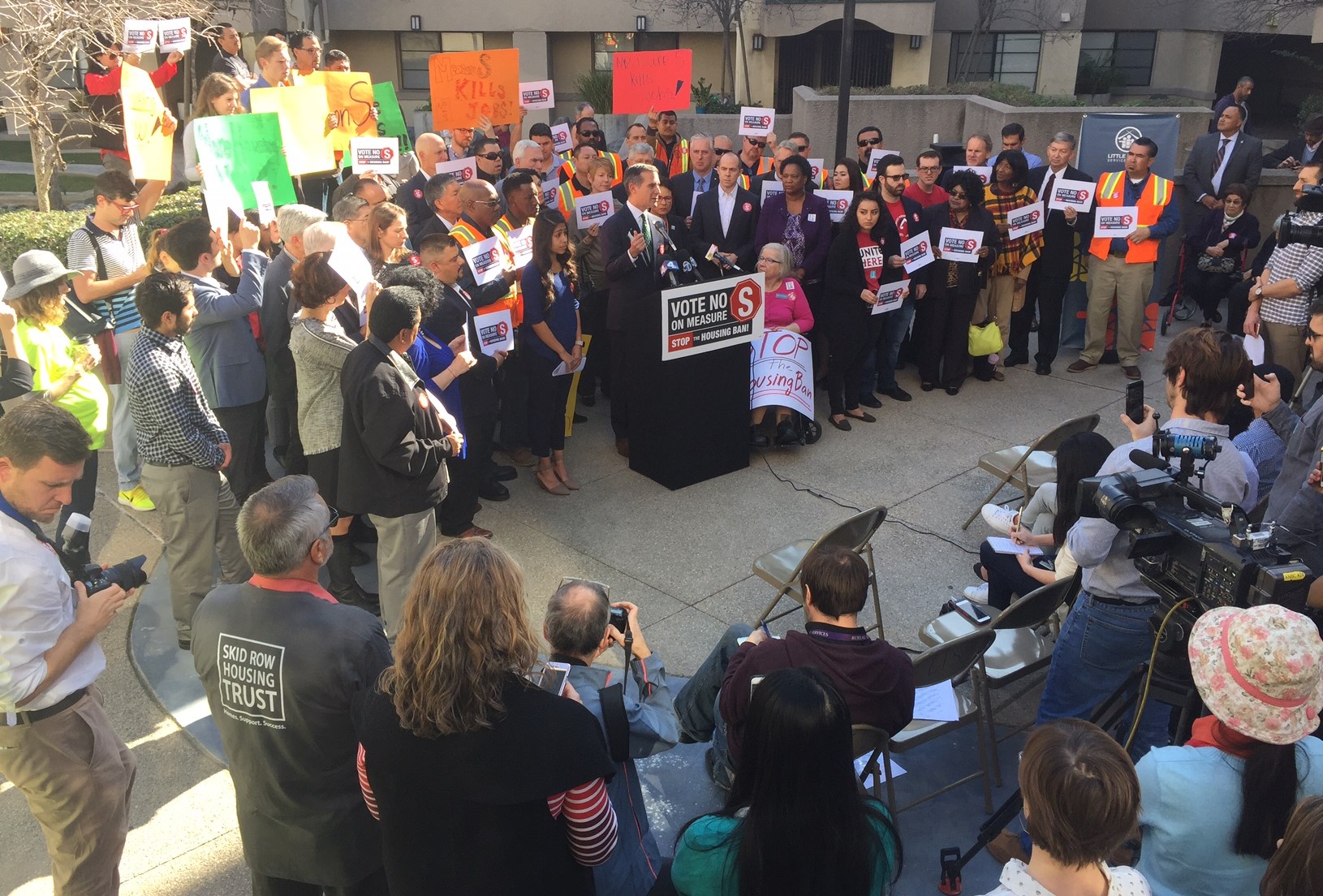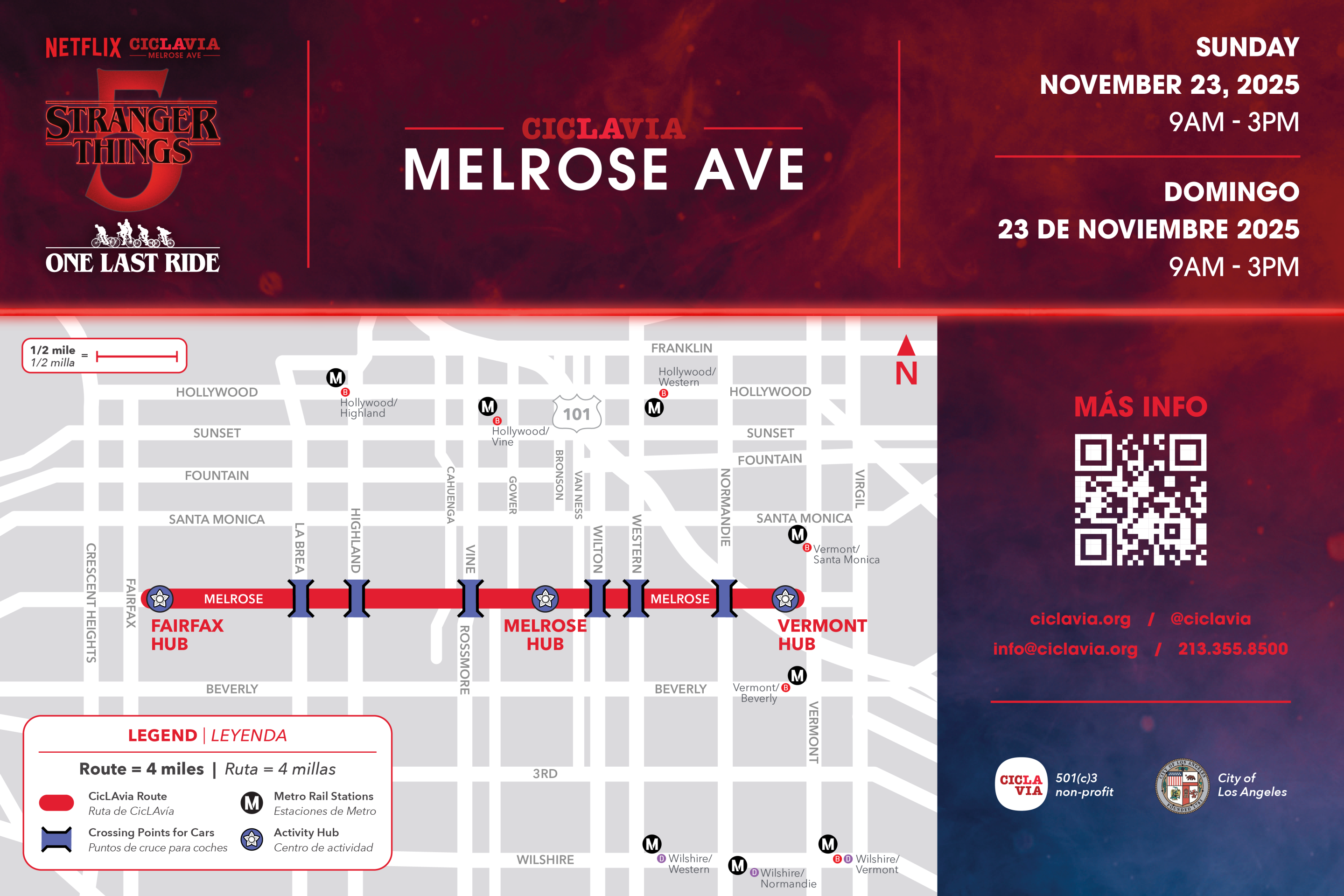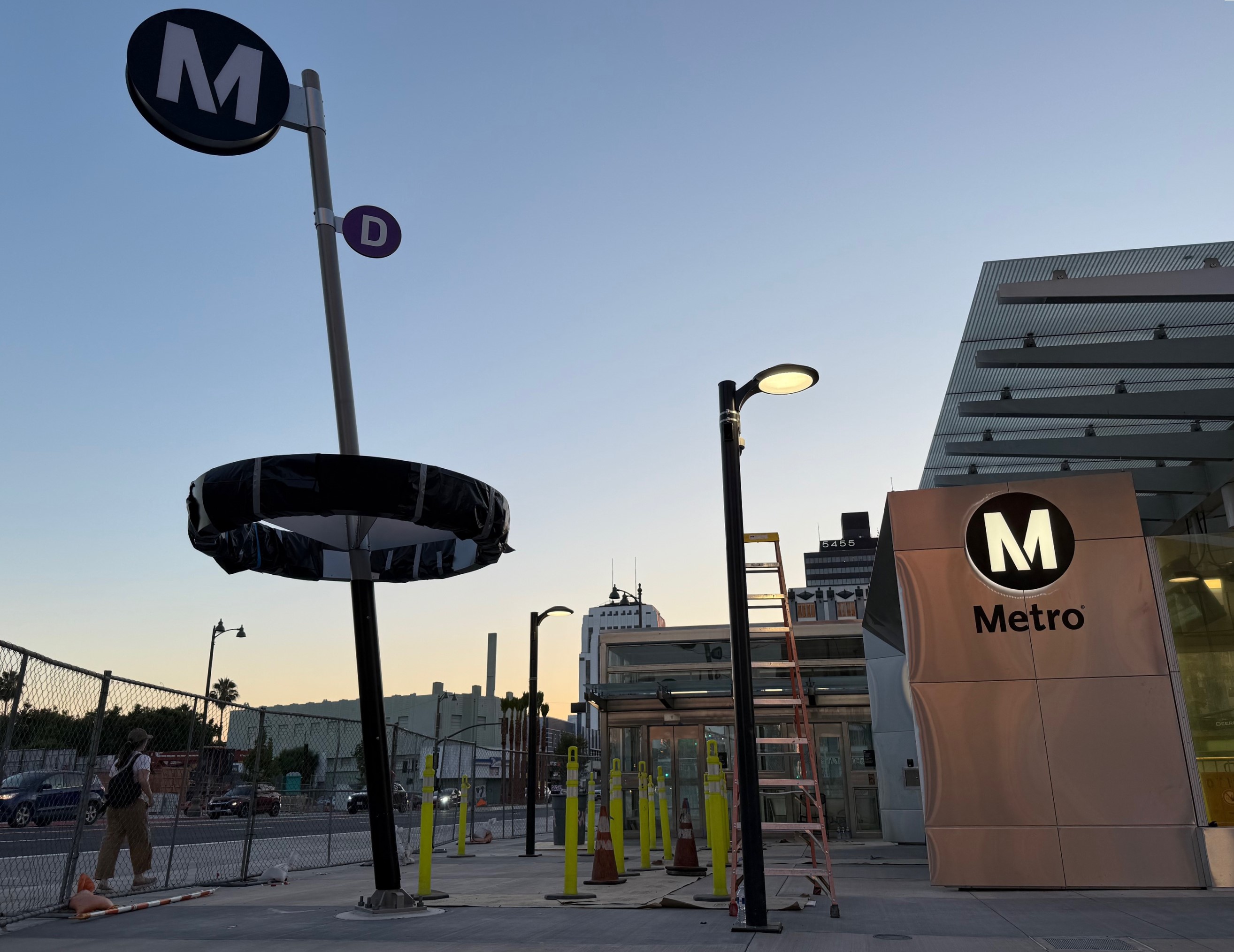Yesterday, opponents rallied against Measure S, calling it a "scorched earth" moratorium on new housing in Los Angeles.
Measure S, also called the "Neighborhood Integrity Initiative," would stop most housing development by temporarily banning zoning changes. After a two-year moratorium, Measure S would require the city to update its neighborhood plans (this update process has been stalled by the same litigious anti-growthers that are pushing NII), but would continue to restrict "spot-zoning" General Plan changes for individual developments.
The rally location was chosen to showcase recently-built affordable housing that would be prohibited in the future if Measure S were to pass. Coalition speakers gathered in the courtyard of Little Tokyo's Casa Heiwa, a mixed-use 100-unit apartment complex built by the nonprofit Little Tokyo Service Center in 1996. Though Measure S has a supposed exemption for some types of zoning changes for developments that are 100 percent affordable housing, the exemption prohibits General Plan amendments. Under Measure S, affordable housing projects could potentially build extra height in a residential zone (such as going from two to four stories), but could not build affordable housing on land zoned for parking or industrial uses. No changes would be allowed for mixed-use projects that include some affordable and some market rate housing.
Rally speakers included elected officials, affordable housing residents, nonprofit developers, and representatives from labor, business, environmental, and social justice organizations.
L.A. Mayor Eric Garcetti stressed that if Measure S passes, it will worsen L.A.'s housing crisis by raising rents and blocking city efforts to develop housing for the homeless. Los Angeles County Federation of Labor leader Rusty Hicks pointed out that Measure S would not prevent undesirable by-right development, including mansionization.
Though some well-intentioned anti-gentrification leaders have warmed to Measure S, based on its promise to stop some luxury housing development, overall the initiative would likely worsen gentrification and displacement. Measure S would restrict the quantity of new housing being built, thereby driving up housing/rent costs because of supply and demand.
One aspect of Measure S that Shoupista Streetsblog readers will find especially pernicious is the initiative's insistence on enforcing L.A.'s outdated suburban-scale parking requirements. Measure S specifically limits the city's powers to approve variances that reduce required on-site parking. This flies in the face of a recent transit-oriented development study that concluded that U.S. cities build excessive unused parking. That study found that, even at peak times, L.A.'s Wilshire Vermont Station Apartments parking spots were only two-thirds full. Adhering to unneeded parking requirements drives up the cost of housing, but right-sizing parking requirements near transit would be prohibited under Measure S.
Streetsblog Los Angeles officially opposes Measure S. SBLA encourages readers to vote No on S on March 7.
There is a lot of misleading information in circulation about NII, so SBLA encourages readers to use your networks to help set the record straight. The March election will very likely have low voter turnout, so it is critically important to vote no, to encourage your friends to do the same, and to get involved in efforts to defeat this destructive housing ban. To volunteer, go to the Vote No on Measure S website.
For more Measure S background, see earlier Streetsblog L.A. editorials by Brian Addison and Shane Phillips.







